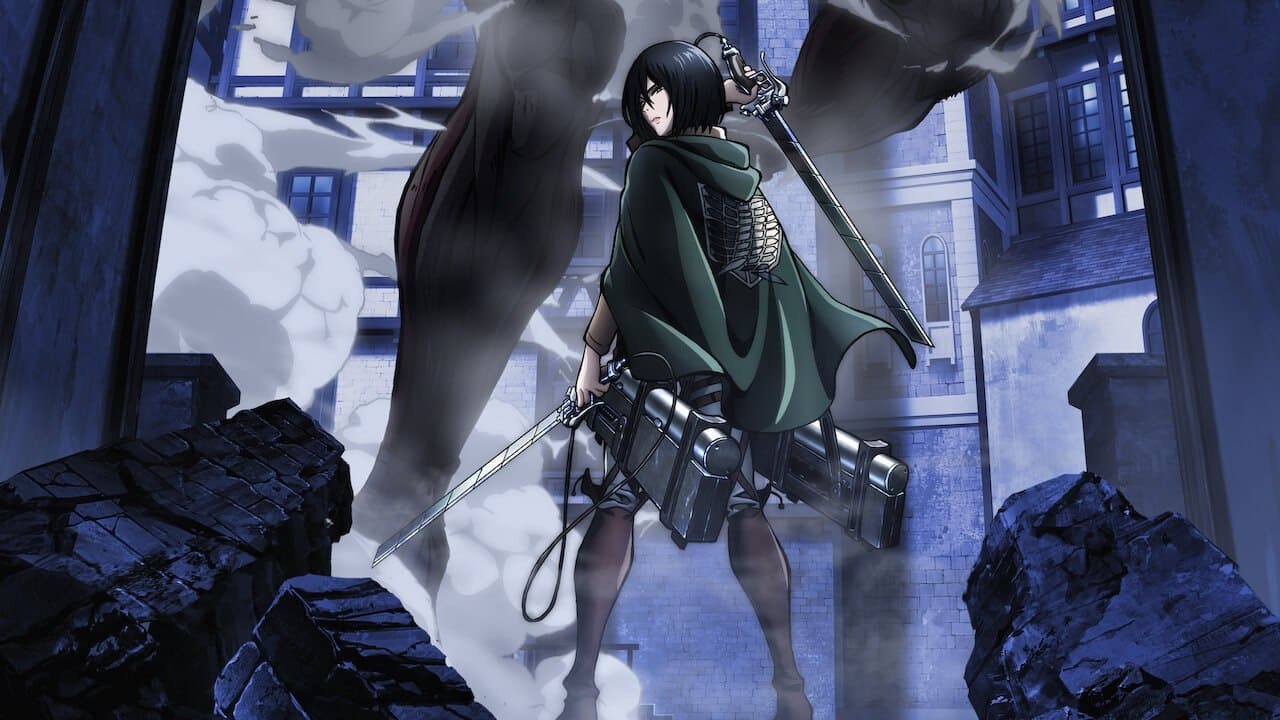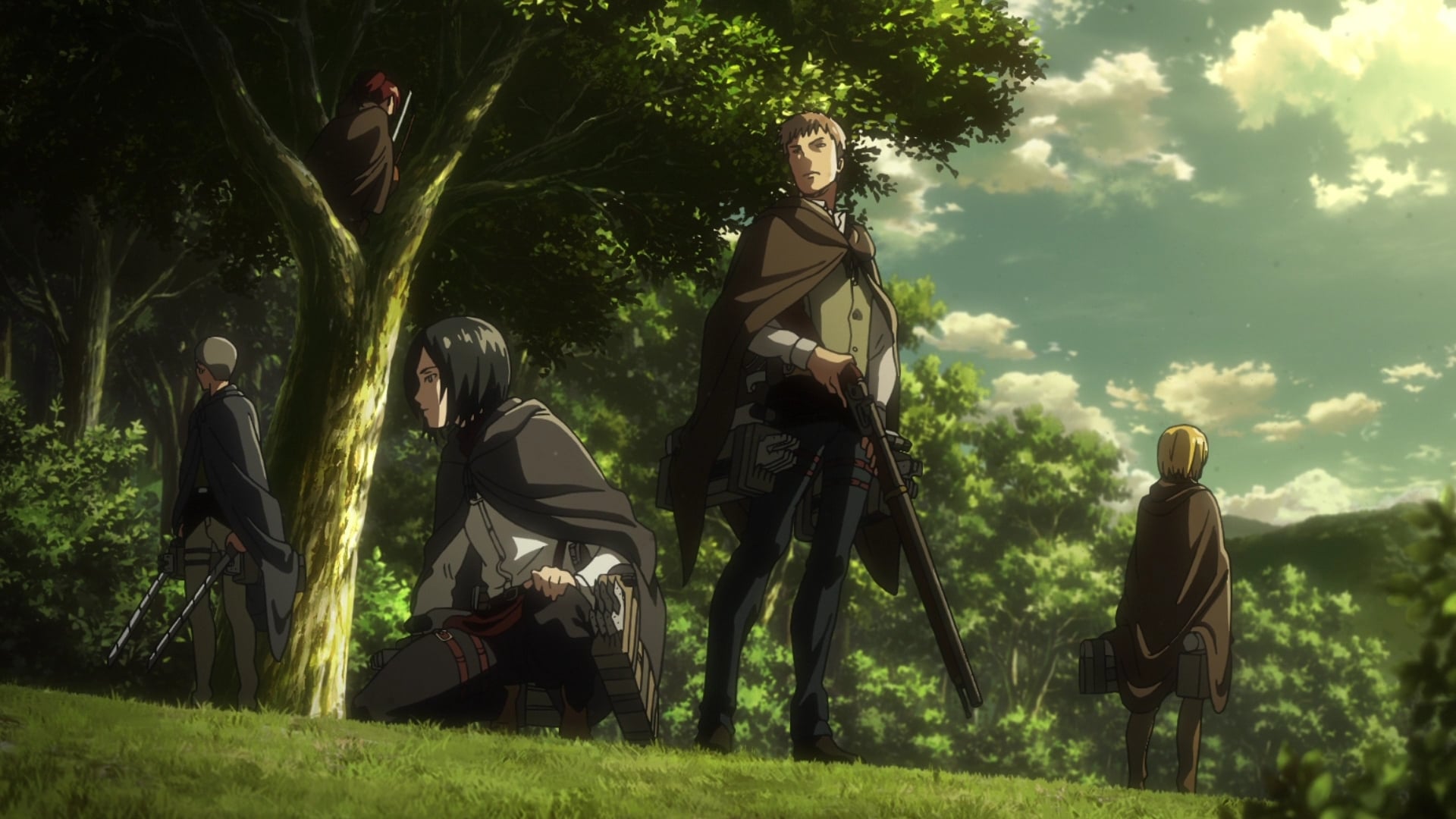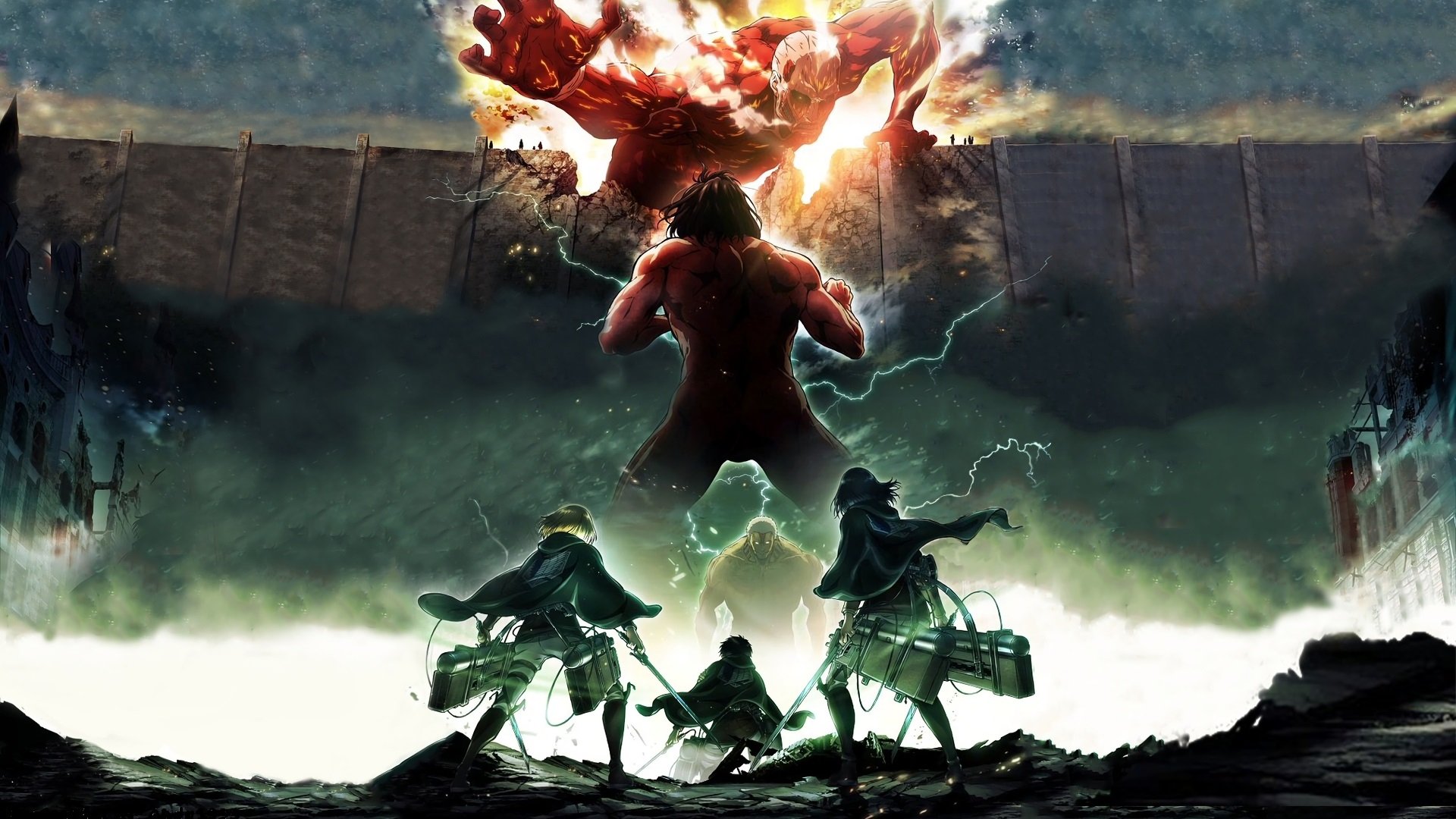Attack on Titan - Complete Series
Attack on Titan is a Japanese dark fantasy anime based on the manga series of the same name by Hajime Isayama. On September 28, 2013, my journey began with 'To You, in 2000 Years: The Fall of Shiganshina, Part 1'. An epic episode that introduced me to the world of Attack on Titan and anime. I quickly became hooked on the story, the mysterious Titans and the intriguing world. Ten years after the first episode, the impressive series finale was released and received mixed reactions from anime fans. Fortunately, I was able to form my own opinion. Here is my take on Attack on Titan.
As the story progresses, mysteries about Titans, the Walls and their origins reveal themselves. Titan Shifters, individuals who can transform into Titans with unique abilities, begin to play a central role. Political intrigue, internal conflict, and revelations about the Titans' true nature then intensify the ongoing conflicts. The story explores themes of freedom, sacrifice, and revenge.

Created by Hajime Isayama, the story of Attack on Titan is extremely well thought out. Isayama seamlessly weaves unique plot twists and a deep history that would make even historians salivate into the story. In addition to authentic and mysterious elements that keep viewers on the edge of their seats, the story creates a dark atmosphere that sets the tone for the entire anime. The story gradually reveals deeper knowledge of the world, and with each 'Arc' the viewer gains more insights into the world.
Although the focus is initially on Eren, his role diminishes by the end of season four, giving the story a broader perspective. This shift opens the door for other characters, like Mikasa and Armin, to step into the spotlight and undergo their own developments.
The depth is not limited to the 'heroes'. The anime excels at creating interesting antagonists. With characters like Zeke (Takehito Koyasu, Detective Conan) and Reiner (Yoshimasa Hosoya, My Hero Academia), the lines between good and evil become blurred, causing viewers to question their loyalties and perhaps sympathize with their choices.
When we look at the animation of Attack on Titan, one thing stands out. The (action) scenes, especially those with the iconic 3D maneuver equipment, are breathtaking and display top-class animation when it comes to flow and dynamics. The attention to detail and the impressive aerial combat scenes, which immediately make me think of the fight between Levi (Hiroshi Kamiya, Fate/stay night) and Kenny (Kazuhiro Yamaji, One Piece), show the skill of the animators in conveying of speed and tangibility.
While the overall animation quality is superb, there are some quirks at times. For example, in the earlier episodes of season one and certain scenes in later seasons, there were moments where the aforementioned 'flow' and detail seemed to diminish. The switch of production houses is also clearly noticeable after season three. For example, Wit Studio used 2D and 3D animation for the Titans in the first three seasons. MAPPA, on the other hand, chose to use mainly CGI for the Titans in Attack on Titan season four.

After re-reading my old reviews, I find that my viewing experience of Attack on Titan has changed a lot over the past two years. I have now started to enjoy quiet moments more, the overarching story and have gained a better insight into the historical aspects and political conspiracies. Whether this is due to growing older or simply rewatching the anime remains to be seen.
Fortunately, in my opinion, the quiet moments ensured that there was room for the story to breathe. This gave the beautifully animated (action) scenes the attention they deserved. There are some unanswered questions left after the end of the anime, but to avoid spoilers, I won't mention them here. Although many anime fans have expressed their dissatisfaction with the ending, I believe that the story is well constructed and leaves room for various interpretations. All in all, highly recommended!
In a world where humanity hides behind gigantic walls to protect itself from Titans, humanoid creatures that randomly devour people, we follow the story of Eren Yeager (Yuki Kaji, Inazuma Eleven), his adopted sister Mikasa Ackerman (Yui Ishikawa, Violet Evergarden) and friend Armin Arlert (Marina Inoue, Hunter × Hunter (2011)). After their hometown, Shiganshina, is destroyed by the Colossal Titan, Eren joins the army out of a desire for revenge.This World Is Cruel, And It’s Also Very Beautiful.
As the story progresses, mysteries about Titans, the Walls and their origins reveal themselves. Titan Shifters, individuals who can transform into Titans with unique abilities, begin to play a central role. Political intrigue, internal conflict, and revelations about the Titans' true nature then intensify the ongoing conflicts. The story explores themes of freedom, sacrifice, and revenge.

© MBS
Created by Hajime Isayama, the story of Attack on Titan is extremely well thought out. Isayama seamlessly weaves unique plot twists and a deep history that would make even historians salivate into the story. In addition to authentic and mysterious elements that keep viewers on the edge of their seats, the story creates a dark atmosphere that sets the tone for the entire anime. The story gradually reveals deeper knowledge of the world, and with each 'Arc' the viewer gains more insights into the world.
Although the focus is initially on Eren, his role diminishes by the end of season four, giving the story a broader perspective. This shift opens the door for other characters, like Mikasa and Armin, to step into the spotlight and undergo their own developments.
The character development in Attack on Titan is a crucial element that makes the anime so fascinating. Throughout the anime, the characters grow and develop, giving viewers a deeper connection with them. Examples of this can be seen in characters such as Krista (Shiori Mikami, Akebi-chan no Sailor-fuku) and Jean (Kishō Taniyama, Boruto: Naruto Next Generations), who undergo remarkable developments. We also see these different developments in the main characters such as Eren, Armin and Mikasa. Eren slowly walks an irreversible path, Armin learns to appreciate his own strategic insights and Mikasa becomes increasingly open to others.In Attack on Titan, the lines between heroes and villains blur through intriguing character developments, questioning the true nature of good and evil.
The depth is not limited to the 'heroes'. The anime excels at creating interesting antagonists. With characters like Zeke (Takehito Koyasu, Detective Conan) and Reiner (Yoshimasa Hosoya, My Hero Academia), the lines between good and evil become blurred, causing viewers to question their loyalties and perhaps sympathize with their choices.
When we look at the animation of Attack on Titan, one thing stands out. The (action) scenes, especially those with the iconic 3D maneuver equipment, are breathtaking and display top-class animation when it comes to flow and dynamics. The attention to detail and the impressive aerial combat scenes, which immediately make me think of the fight between Levi (Hiroshi Kamiya, Fate/stay night) and Kenny (Kazuhiro Yamaji, One Piece), show the skill of the animators in conveying of speed and tangibility.
While the overall animation quality is superb, there are some quirks at times. For example, in the earlier episodes of season one and certain scenes in later seasons, there were moments where the aforementioned 'flow' and detail seemed to diminish. The switch of production houses is also clearly noticeable after season three. For example, Wit Studio used 2D and 3D animation for the Titans in the first three seasons. MAPPA, on the other hand, chose to use mainly CGI for the Titans in Attack on Titan season four.

© MBS
After re-reading my old reviews, I find that my viewing experience of Attack on Titan has changed a lot over the past two years. I have now started to enjoy quiet moments more, the overarching story and have gained a better insight into the historical aspects and political conspiracies. Whether this is due to growing older or simply rewatching the anime remains to be seen.
Fortunately, in my opinion, the quiet moments ensured that there was room for the story to breathe. This gave the beautifully animated (action) scenes the attention they deserved. There are some unanswered questions left after the end of the anime, but to avoid spoilers, I won't mention them here. Although many anime fans have expressed their dissatisfaction with the ending, I believe that the story is well constructed and leaves room for various interpretations. All in all, highly recommended!
About the writer, Karzal
Mike (1995) has been a member of MySeries since 2016 and is mainly active on the English version of the site. Since 2018, he has been actively translating news articles, columns, reviews and basically everything that ends up on the Dutch site. The original articles, columns and reviews were actually written by others. During the week Mike can be found at IKEA, where he is a national systems specialist and occasionally also in the classroom to teach an English lesson. In addition, Mike logically enjoys watching series and has actually been spoon-fed this from an early age. The genre doesn't matter, there is a place for everything in the otherwise busy life.
View profile of Karzal





